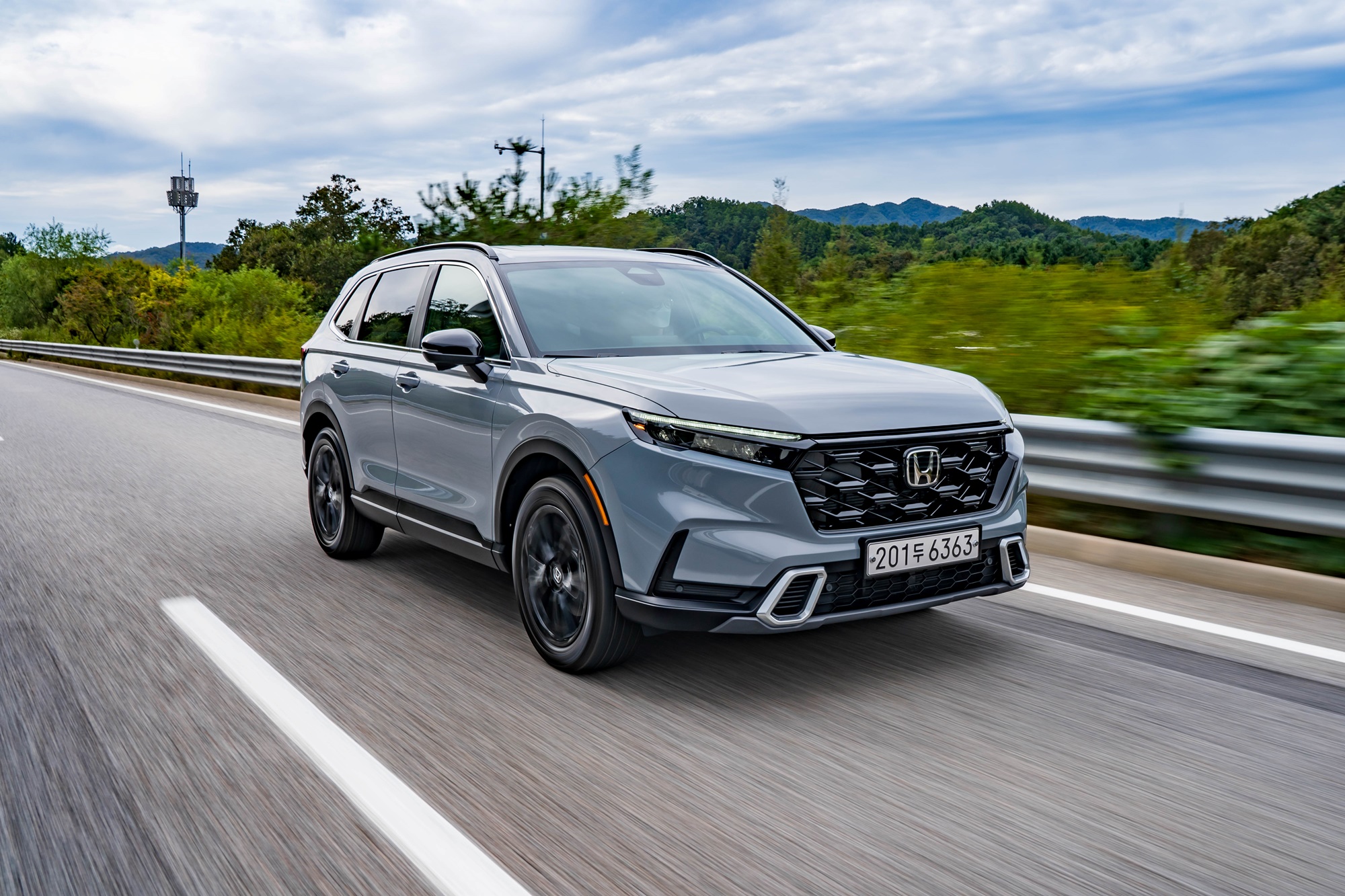
The real deal has arrived. The ‘CR-V Hybrid’ is the genuine article. Following the ‘CR-V Turbo’ that arrived last spring, the main variant, the ‘CR-V Hybrid’, has begun sales in South Korea.
The CR-V has grown bigger with its sixth generation. It now measures 4,705mm in length, which is 75mm longer, and the wheelbase has increased by 40mm to 2,700mm. The vertically arranged rear combination lamps are impressive with their neatly organized appearance. The robust straight lines along the side of the body and the horizontal line of the dashboard inside create a tidy image.
The second-row seats are adjustable in 8 stages. The trunk offers a capacity of 1,113L, which can fit four golf caddy bags. It can also accommodate a large stroller. Folding down the second-row seats expands the space to 2,166L. This ample space can be used for carrying cargo or can be utilized for camping inside the car. It’s undoubtedly a spacious and generous area.
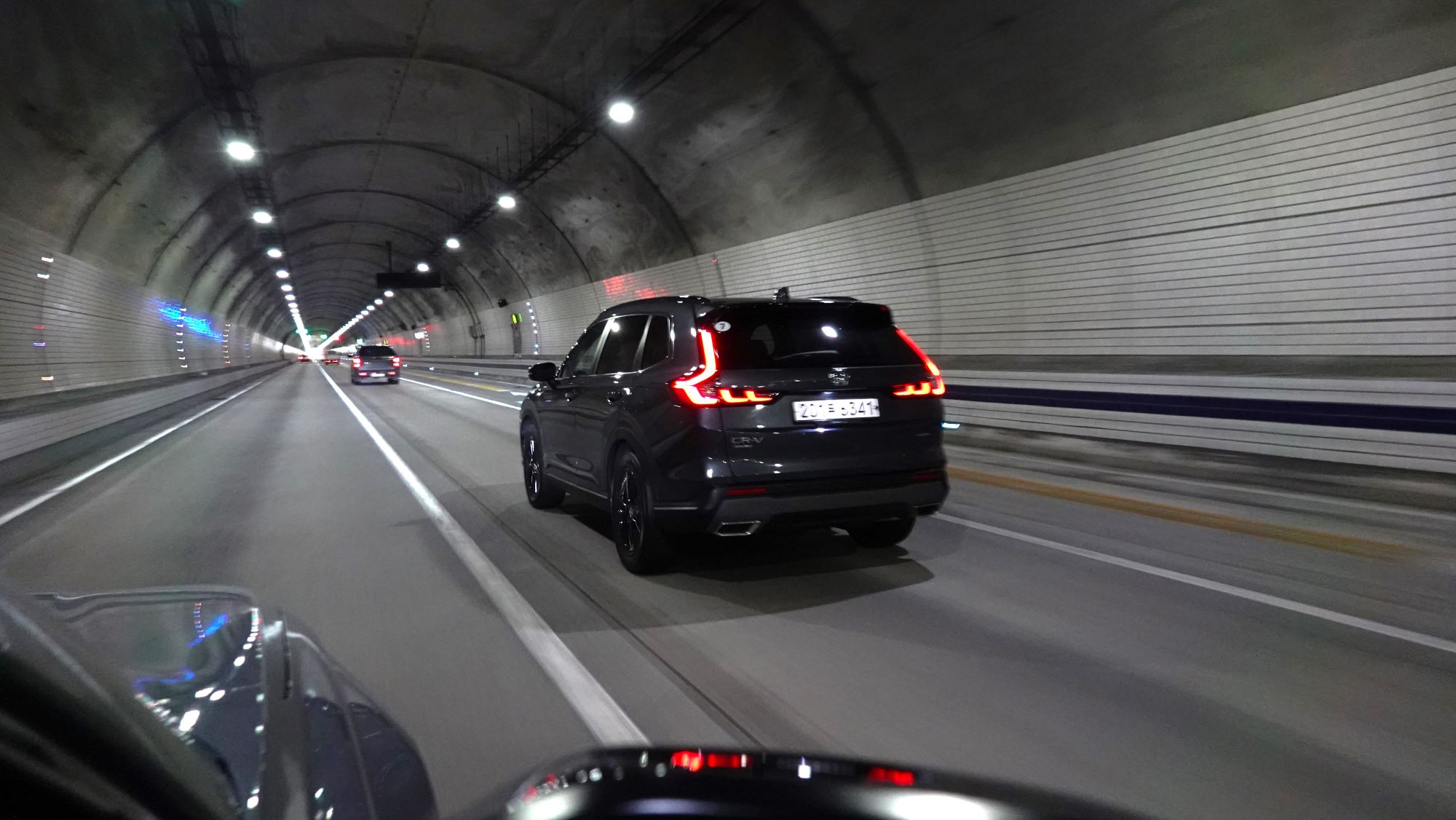
As the car gets bigger, the distinctions between segments tend to blur. It can be classified as a compact or mid-size SUV. Families with middle or high school children can comfortably use it as a family car given its spaciousness. The center tunnel is slightly raised, but it doesn’t significantly impede the rear seat space. You meet an open and spacious environment.
I tested the CR-V Hybrid on the stretch from Gapyeong to Chuncheon in Gyeonggi Province. It features a 2.0 direct-injection Atkinson engine coupled with an e-CVT, complemented by two motors in its powertrain. The key point is the use of two motors: one for driving and the other for generating power. Although the structure is slightly complex, it has opted for a parallel layout to keep it compact.
The engine produces 147 horsepower, while the motors provide 184 horsepower. There’s no specific system power disclosed in South Korea, but according to U.S. figures, the system output is 215 horsepower. With a curb weight of 1,790kg, that translates to 8.3kg per horsepower, which indicates reasonable performance levels can be expected.
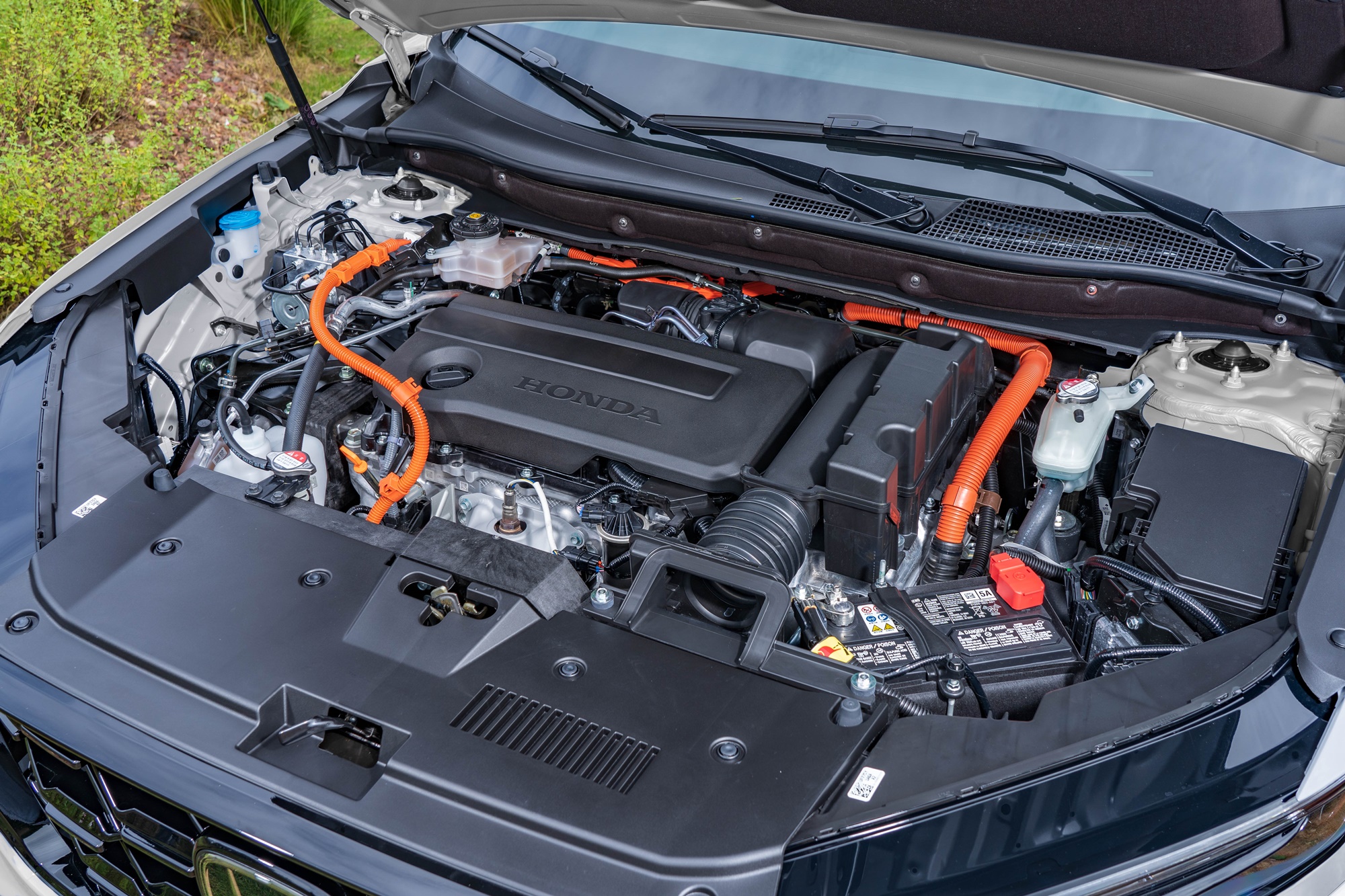
Its officially certified combined fuel efficiency is 14.0 km per liter. The hybrid system provides relatively excellent fuel efficiency. If eco mode is actively utilized for economical driving, even better mileage can be anticipated.
The interior is generally quiet. Opening the engine room reveals the polyurethane cover. NVH levels have been improved with sound-absorbing materials. At lower speeds, a slight sound can be heard, not from the driving motor but a type of warning sound intended for pedestrians. This sound becomes a bit louder in reverse. While it’s not a pleasant sound, it can be understood as a type of alert.
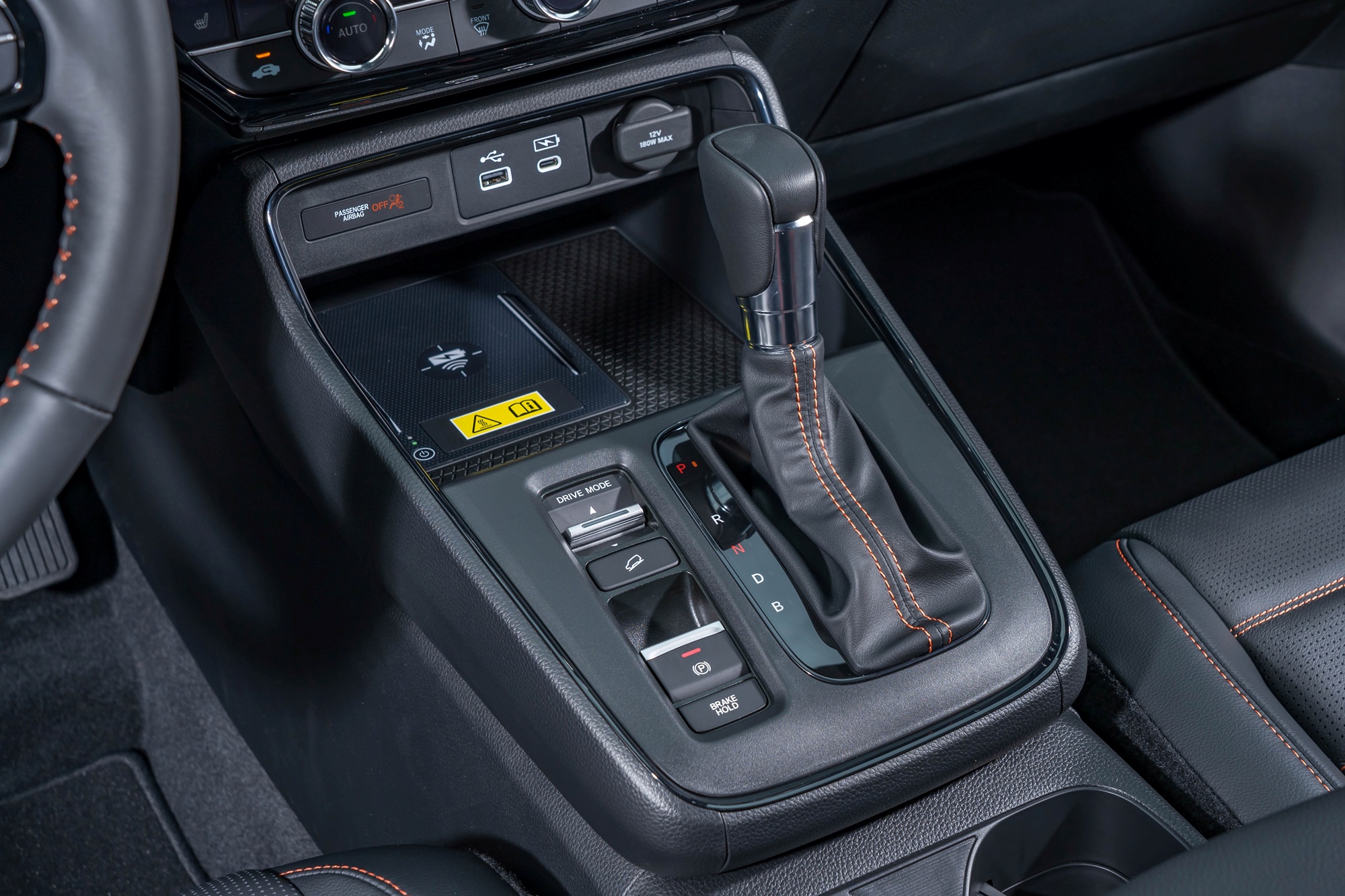
When driving in EV mode, the interior is extremely quiet. The engine stays subdued while the motor quietly moves the car. The smooth response of the e-CVT also contributes to this tranquility. Selecting sport mode is much more satisfying when accelerating due to the change in engine sound. In eco mode, consistently pushing for acceleration may result in a rather strained sound. However, switching to sport mode brings a robust baritone engine sound reminiscent of an adult male’s voice, which is much more pleasant to hear.
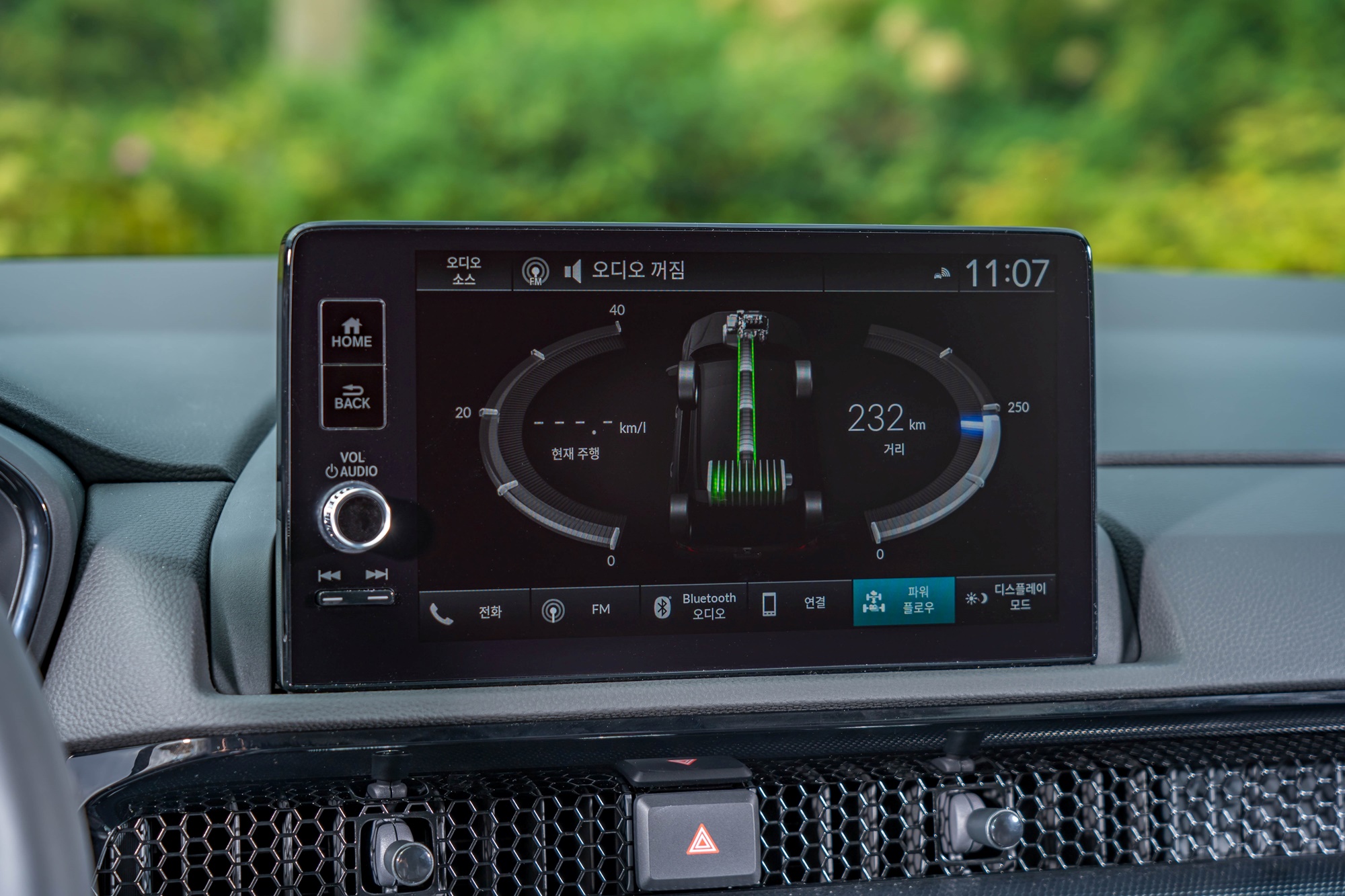
The stability provided by the all-wheel-drive system stands out. When accelerating on highways, the sensation of all four wheels gripping the road is markedly different from rear-wheel drive. The distribution of power between front and rear can shift from 6:4 to 5:5.
The shift lever includes a B mode typical of electric vehicles. This facilitates easier deceleration control. It allows for a deceleration effect without pressing the brake, reducing speed while also benefiting from regenerative braking effects. When used downhill, this can also promote economical driving.
The suspension response is also satisfactory. It strikes a balance between firmness and softness well. While it firmly grips the road, it smoothly absorbs impacts when encountering speed bumps without bouncing and without residual vibrations. It maintains its composure while gliding over obstacles.
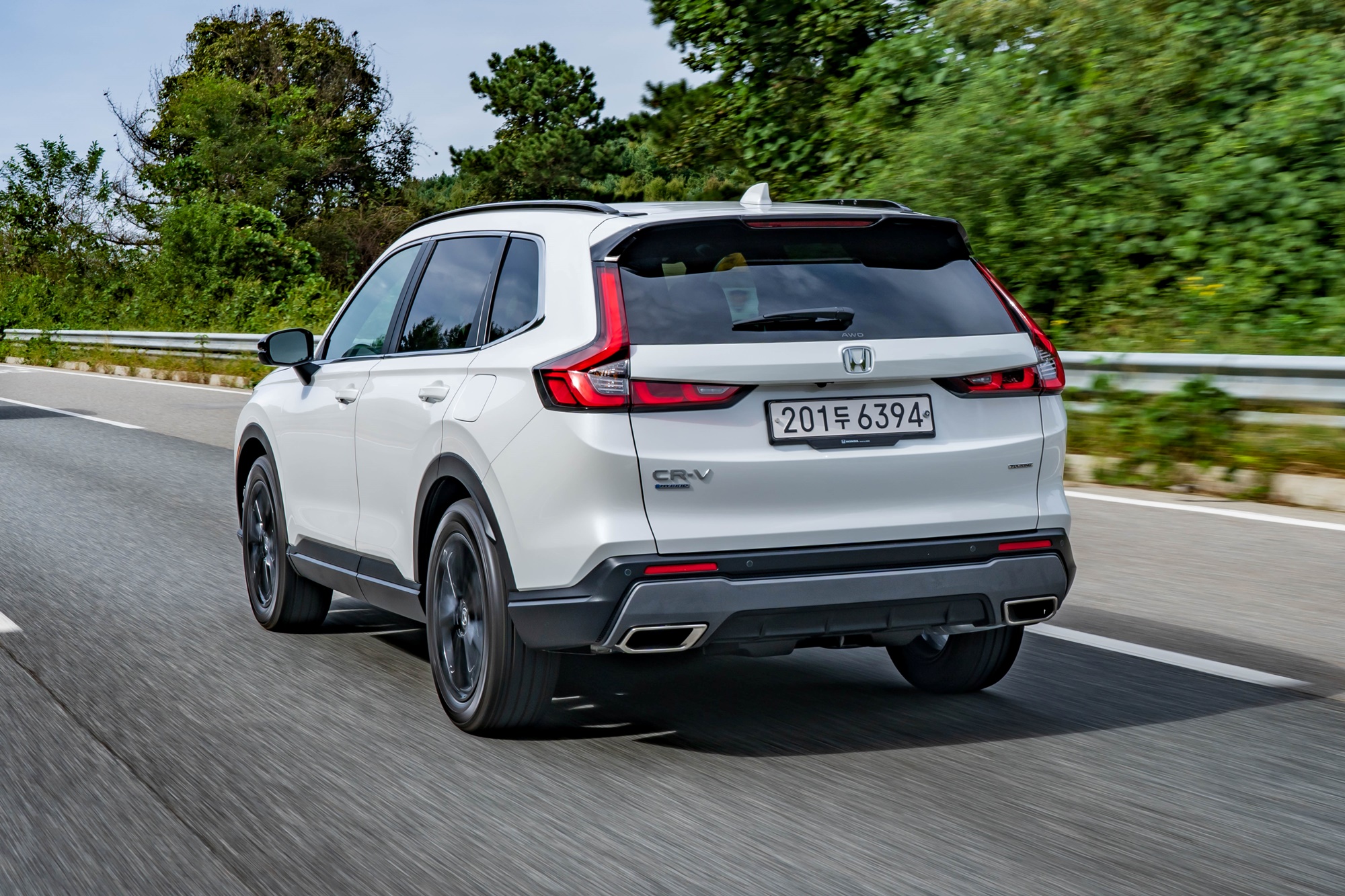
Honda Sensing is a system of driving assistance. Its camera and radar recognition ranges have been broadened, significantly enhancing its reliability. The Adaptive Cruise Control (ACC) and Lane Keeping Assist System (LKAS) perform remarkably well in semi-autonomous driving conditions.
Honda’s proprietary safety chassis design technology, ACE™ (Advanced Compatibility Engineering), combined with 10 airbags, ensures a high level of safety. It received the TSP+ (Top Safety Pick+) rating from the Insurance Institute for Highway Safety (IIHS), indicating its superior safety credentials.
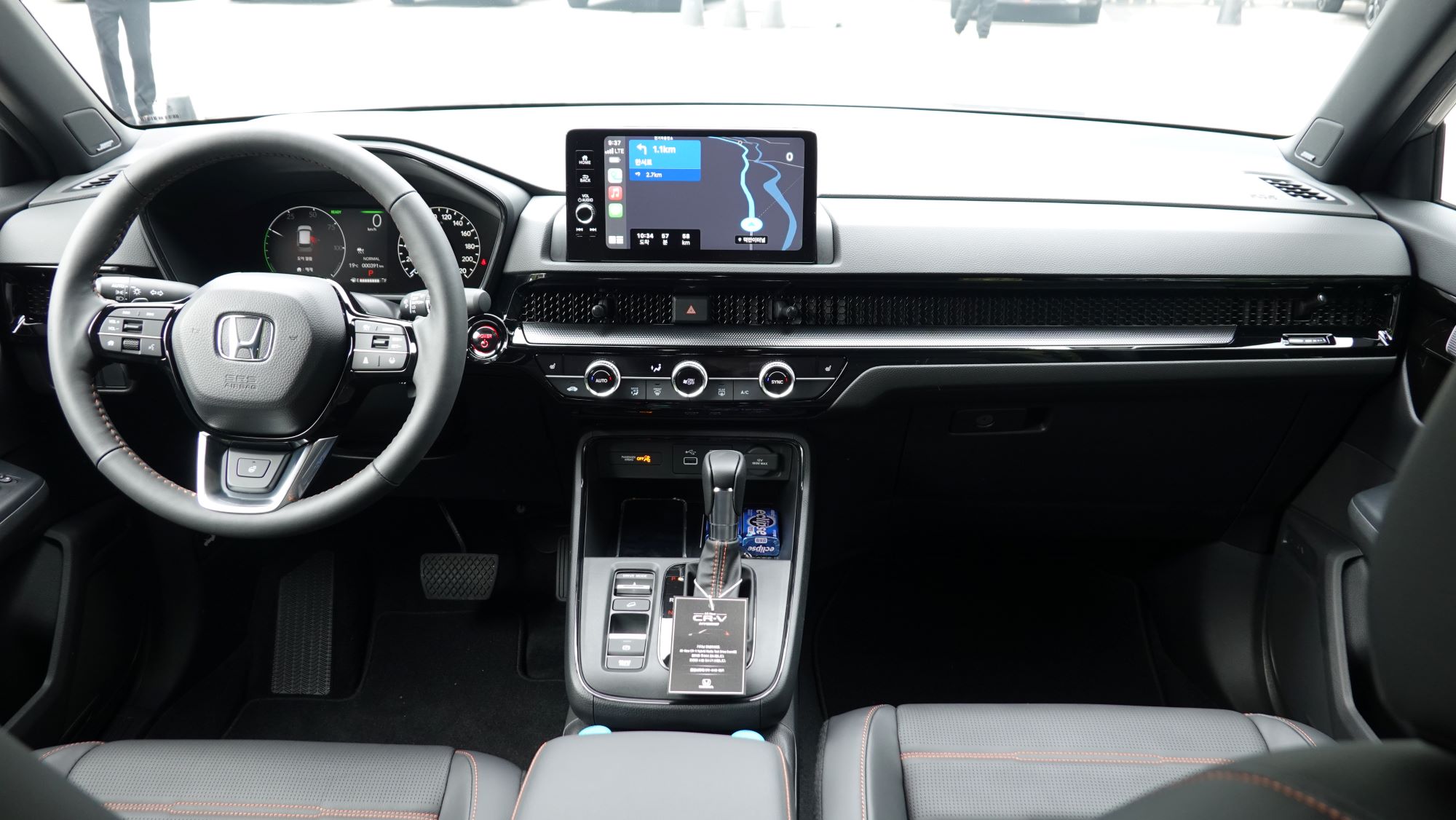
The infotainment system implements Android Auto or Apple CarPlay. While CarPlay can connect wirelessly, Android Auto requires a wired connection. There is no built-in navigation system. Instead, it uses the 9-inch center fascia monitor to access smartphone navigation. If you forget to bring your smartphone, you won’t be able to access navigation.
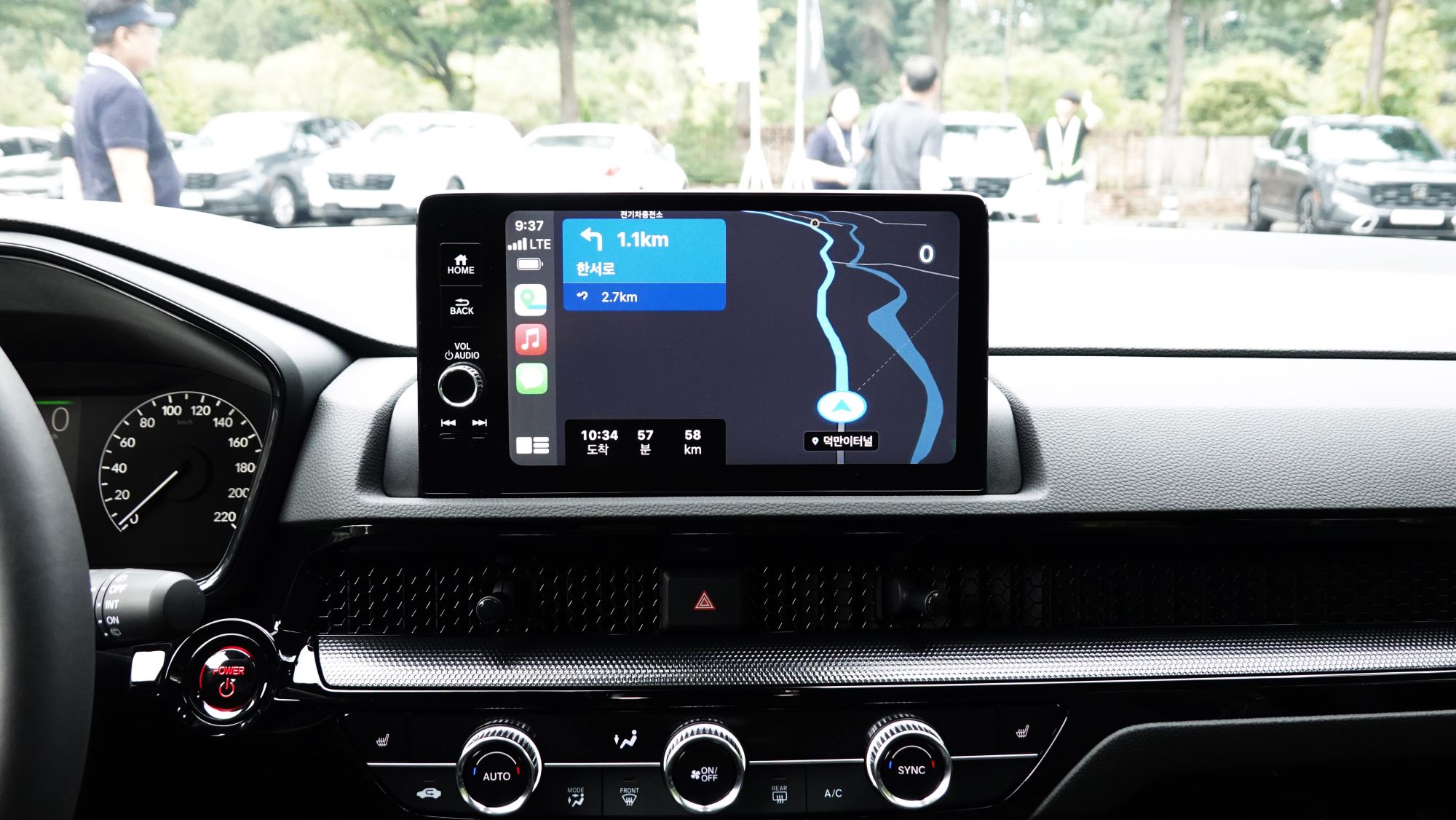
Perhaps in an effort to save money on navigation, they invested heavily in the audio system. It features BOSE Premium Audio with a total of 12 speakers, including a large subwoofer. Especially in EV mode, when the cabin is quiet, you will experience exceptional sound quality.
Overall, this electric model possesses a reliable character. The synergy between the engine, motor, and e-CVT operates seamlessly. It makes for an ideal family vehicle. Another advantage is that Honda is a brand known for high durability and customer satisfaction. It’s rare for breakdowns to occur, which contributes to long-term satisfaction. This is evident from various consumer research findings both domestically and internationally. If you’re considering a long-term car purchase, add Honda to your shopping list. The same goes for the CR-V Hybrid.
The CR-V Hybrid is available in a single trim, the 4WD Touring, with a price of 55,900,000 won. It can be purchased through Honda’s newly launched online platform, effective this year.
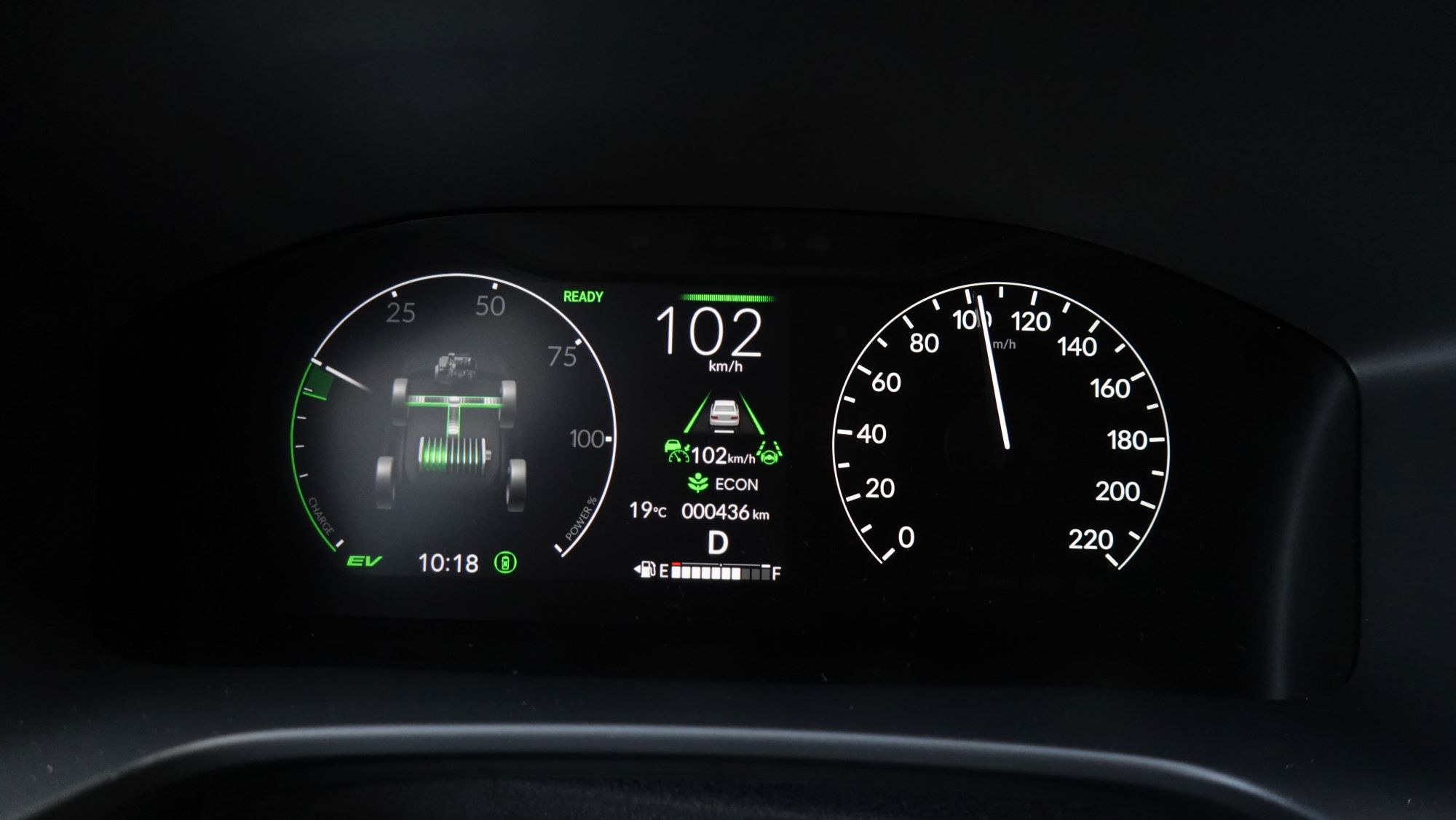
Directly from Oh Jong-hoon
The second-row seats can be adjusted in 8 stages. The adjustment lever is located at the top end of the seat beside the shoulder. To adjust the seat, you need to turn your body and push the lever, which can be quite uncomfortable. Moving the lever downward for easier adjustment would allow for a better experience of the convenience of adjustable rear seats.
The lane watch feature shows the right rear situation with cameras when changing lanes. It’s great to see without blind spots. The downside is that the navigation becomes unavailable at that time. When you’re relying on navigation and turn on your signal to make a right turn, you won’t see the map as the lane watch screen appears. You have to choose between giving up the map or the signal. Neither option is ideal.
Oh Jong-hoon yes@autodiary.kr

